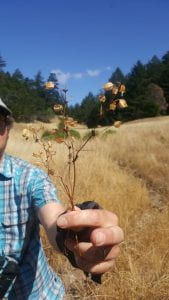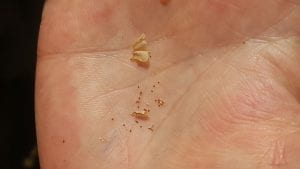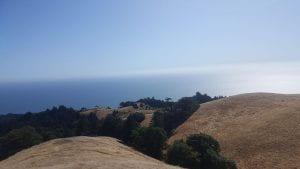This class and lab period (12:45 to 17:00) was used as a time for the class to go on a field trip to Mt. Tamalpais and observe the species Mimulus guttatus and its different forms it takes. M. guttatus, also known as the monkey flower, is a plant with a wide distribution range in the United States which has various forms adapted to different areas. This particular species has yellow flowers, which implies that its pollination syndrome is by bees.
Three areas were visited to observe M. guttatus forms. The first was Cataract Bridge, a shaded trail with a small creek running through it. Alex, one of Professor Paul’s graduate students, enlisted the class’s help to collect samples from this area, which were dried in a silica gel in order to preserve them better for processing. M. guttatus “likes to keep its feet wet” which means they’re generally found in areas with moisture, where they then put down runners. When sampling, young leaves were taken from plants that were at least a meter apart to ensure they weren’t the same plant. Brief discussion of how M. guttatus seeds were spread occurred–one way was likely through water flow. This is one of the methods Alex is using in his research: how molecular ecology can be used to analyze gene flow.
Slightly up from Cataract Bridge is a field that, in the heat, was largely dried up. Despite this, we observed an M. guttatus with its seed pods. Their seeds are quite small, but M. guttatus was able to survive with very limited water in this area.
Next, we observed M. guttatus in a serpentinite patch. Serpentinite occurs in areas where two plates meet (and it’s the state rock of California!) It occasionally allows water to seep up through when it is cracked, which is where some M. gutattus patches survived.
Lastly, we walked a path to find M. guttatus in a valley. Water flows down through the valley and enables green patches to crop up–we found M. guttatus among a patch of rushes and sedges which was surprisingly muddy despite the dry grasses and buckwheat surrounding it.




